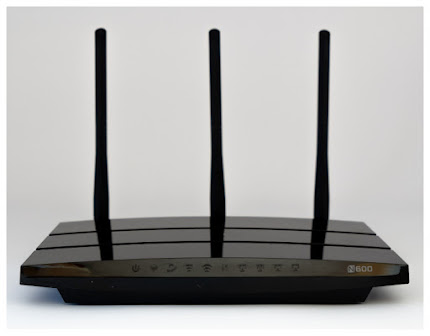How to Set Up A Home Network Proactively
The home network is the gateway between the Internet and your comfort zone. Whether you want to add multiple devices over a network or you want to browse the internet at 3x speed, you can install ultra-modem communication devices to strengthen your network. If you are ready to purchase devices to set up your home network appropriately, then you are reading the right content. In this post, we are going to share the best network devices that you can bring to your home to experience nonstop connectivity. Have a look below to set up your home network without any hassle.
Access Your Router
When it comes to
connecting multiple devices over a network, noting can benefit you more than a
powerful router. If you want to offer nonstop connectivity to any device that
will connect to your network, then you will need to configure them
appropriately. Make sure to connect all devices to your network via a high-end
router including but not limited to phones, laptops, desktop PCs, Smart TV, and
any compatible device. Once you add all devices to your network through wireless access or ethernet cable, ensure to manage them through the
device’s admin panel.
Leverage the Router's
Interface
The next step to setting
up a home network is to leverage the router's interface. For this, you will
need to connect the router with your laptop by entering the specific IP address. Once
you get into a router interface or admin panel, you can access all users that
are connected to the internet with a different IP address. You will need to
enter the administrator ID and password that is provided by the router
manufacturer. Usually, admin is the user ID and password of most router's which
you can change after connecting to it. This allows you to access the router via
the laptop for crucial configuration.
Assign an IP Address
After you leverage the
router admin panel, the next big task is to secure your home network by
providing an IP address to every device. Assigning a secure IP address is the
right method to secure bandwidth from stealing. This is because an IP address
is a must-have option for optimum security of devices that are available in
your network. When you assign an IP address you can secure your home network in
a proactive manner. In case you are not able to set up devices through the
router’s admin panel then you should watch a video tutorial by the router manufacturer.
Configure Sharing System
Now that you have
assigned a dedicated IP address to every device that is connected to your home
network, it is the right time to set up sharing system. All you need to do is
to set up a home network that will allow everyone to access data in a secure
manner. Make sure to create a Home network by which you can share a massive
range of files among different devices including PC, smartphones, TV, and printers. With a Home network, you can securely share your required music,
videos, images, and various types of documents over a specific network.
Add User Accounts
In most home networks,
only allowed users can access the internet by adding an appropriate user
account and password. Make sure to add users to your home networks while
setting up the router. By doing this you will not only limit the number of
users accessing the network but also control your network resources
proactively. Or else it might become a daunting task for you to offer seamless
internet connectivity to every device that is connected to your home network.
Run A Speed Test
Once you add a number of
devices to your network, ensure to run a speed test. There are different ways
to run a speed test from online method to application. Make sure to utilize a
speed test method that will enable you to figure out the uploading and
downloading speed in a crystal-clear manner. In case you are not getting your
required bandwidth speed from the internet service provider end then you can
upgrade your package. Further, you can also reduce some devices to minimize the
load of your network. Otherwise, you will miss a great chance to enjoy nonstop
internet at home with no regret.
Conclusion

Comments
Post a Comment